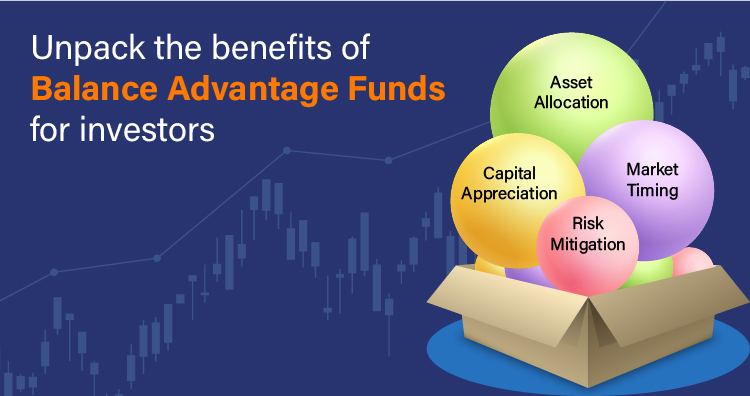


Unpacking the Benefits of Balance Advantage Funds for Investors
Investing in mutual funds can be a great way to grow your wealth and achieve your financial goals. However, many investors are often concerned about the risks associated with investing in the volatile stock market. If you're looking to invest in mutual funds but also want to reduce your risk, then balance advantage funds might be the perfect option for you. In this blog post, we will delve into the benefits of balance advantage funds and why they are a smart choice for investors.
What are Balance Advantage Funds?
Balance advantage funds, also known as hybrid funds, are a type of mutual fund that provide a mix of both equity and debt instruments in their portfolio. These funds aim to achieve a balance between capital appreciation and stable income generation by dynamically managing the asset allocation based on market conditions.
The Benefits of Balance Advantage Funds
1. Risk Mitigation
One of the key advantages of balance advantage funds is that they offer a built-in risk mitigation strategy. By diversifying the portfolio between equities and debt instruments, these funds aim to reduce the impact of market volatility on your investment. During periods of high market uncertainty, the fund manager can shift the allocation towards debt instruments, providing stability to your investment.
2. Capital Appreciation
While balance advantage funds focus on reducing risk, they also aim to generate capital appreciation over the long term. By investing in equities, which have the potential to deliver higher returns, these funds offer the opportunity for your investment to grow and outpace inflation. The combination of equity and debt instruments in the portfolio helps in achieving a balance between growth and stability.
3. Rebalancing based on Valuation parameters
Most balanced advantage funds rebalance their portfolio by increasing equity exposure when market valuations are low and reducing equity exposure when market valuations are high.
For example, If an BAF is following PE (Price-to-Earnings) Ratio: When the PE ratio of broader market is high, it suggests stock market is costly, so fund managers put more of your money in safer investments like debt fund. Conversely, when the PE ratio is low, it indicates stock market is more affordable, and fund managers may allocate a larger portion of your portfolio to stocks.
Some funds may follow the PB (Price to book) Model by comparing historical PB ratio of broader market to decide whether the market is costly or cheaper to decide the ideal asset allocation between Equity and Debt.
4. Market Timing
Balanced Advantage Funds change their investments in response to how the stock market is doing. If fund managers think the market is not looking good based on valuation matrix, fund managers might put less money into stocks and more into safer options like bonds or cash. This helps protect your money when the stock market isn't doing well and could potentially lead to better returns.
Conclusion
Balance advantage funds provide a wide range of benefits for investors. Their ability to dynamically manage asset allocation, mitigate risk, and generate capital appreciation makes them an attractive option for those looking to invest in mutual funds with reduced risk. The professional management and convenience they offer further enhance the investment experience.
Understanding your investment goals, risk tolerance, and time horizon will help you make an informed decision. Investing in balance advantage funds can be a strategic step towards building a diversified investment portfolio while minimizing risk. By leveraging the benefits of these funds, you can take an important step towards achieving your long-term financial goals.
Mutual Fund investments are subject to market risks, read all scheme related documents carefully.
T9-305, Valley View Estate, Gwal Pahari,
Gurgaon- Faridabad Road,
Haryana, India
+91 98113 26036
Risk Factors – Investments in Mutual Funds are subject to Market Risks. Read all scheme-related documents carefully before investing. Mutual Fund Schemes do not assure or guarantee any returns. Past performances of any Mutual Fund Scheme may or may not be sustained in the future. There is no guarantee that the investment objective of any suggested scheme shall be achieved. All existing and prospective investors are advised to check and evaluate the Exit loads and other cost structures (TER) applicable at the time of making the investment before finalizing any investment decision for Mutual Funds schemes. We deal in Regular Plans only for Mutual Fund Schemes and earn a Trailing Commission on client investments. Disclosure of commission earnings is made to clients at the time of investments.
AMFI Registered Mutual Fund Distributor – ARN-66983 | Date of initial registration – 22-Jul-2022 | Current validity of ARN – 22-Jul-2025
Important Links | Disclaimer | Disclosure | Privacy Policy | SID/SAI/KIM | Code of Conduct | SEBI Circulars | AMFI Risk Factors
